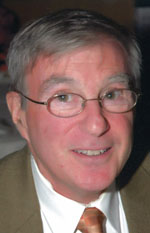Redemption, Then and Now: Pesaḥ Haggada with Essays and Commentary by Rabbi Benjamin Blech; Menorah Books, Jerusalem, © 2017, ISBN 978-1-940516-73-8, p. 310, $24.95
By Fred Reiss, Ed.D.

WINCHESTER, California – Considering the long arc of Jewish history, the Haggada, a book containing the Passover Seder, the traditional ordered meal recreating God’s redemptive acts through the time of the Exodus and into wilderness of Sinai, is a relatively recent addition, beginning its formation in the late Second-Temple period. Based on the Talmud, the Haggada transitions from the disgrace of Joseph being sold into slavery by his jealous brothers to the glory of liberation and the receiving of the Torah at Mount Sinai.
Redemption, Then and Now by Rabbi Benjamin Blech is actually two books in one. From right to left, it is a traditional Haggada, in large-print Hebrew with corresponding large-print English translations, a blessing for aging eyes. From the opening Kiddush through Dayyanu, Blech titillates the reader with unexpected commentary. His comment at V’he Sheamdah, for example, entitled “When Our Enemies Choose Genocide,” reminds the reader of the prophecy regarding redemption from actions directed against the survival of the Jewish nation. The song Dayeinu elicits his question and response about why the fifteen items mentioned in the song deserve our gratitude.
Opening Redemption, Then and Now from left to right, offers twenty-three essays by Rabbi Belch including, “The Five Most Important Thing About Passover”, “The Final Redemption: Nisan or Tishri?”, and “The Seder and the Secret Sentences,” in which he tells of his personal journey to the mystical city of Safed where he encounters a “lamid-vovnick,” one of the thirty-six whose righteous deeds allow the world to continue.
There are many haggadot available; Redemption, Then and Now, a traditional Haggada, is one especially for those desiring more than a cursory discussion about Passover, its symbols, and meaning around the Seder table.
*
Dr. Fred Reiss is a retired public and Hebrew school teacher and administrator. His newest book, The Jewish Calendar: History and Inner Workings, will be published shortly. He is the author of The Standard Guide to the Jewish and Civil Calendars; Public Education in Camden, NJ: From Inception to Integration; Ancient Secrets of Creation: Sepher Yetzira, the Book that Started Kabbalah, Revealed; and a fiction book, Reclaiming the Messiah. The author may be contacted via fred.reiss@sdjewishworld.com.